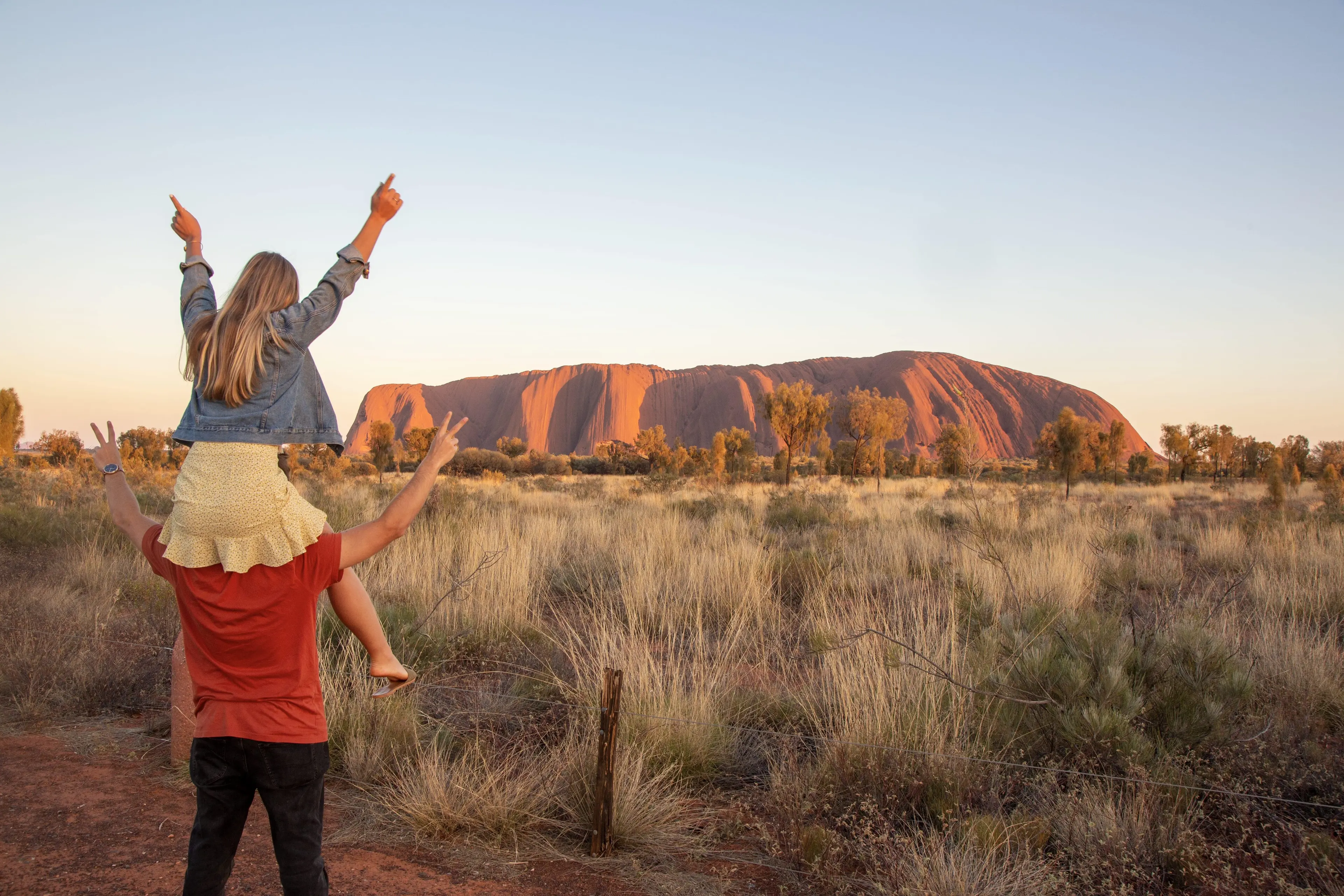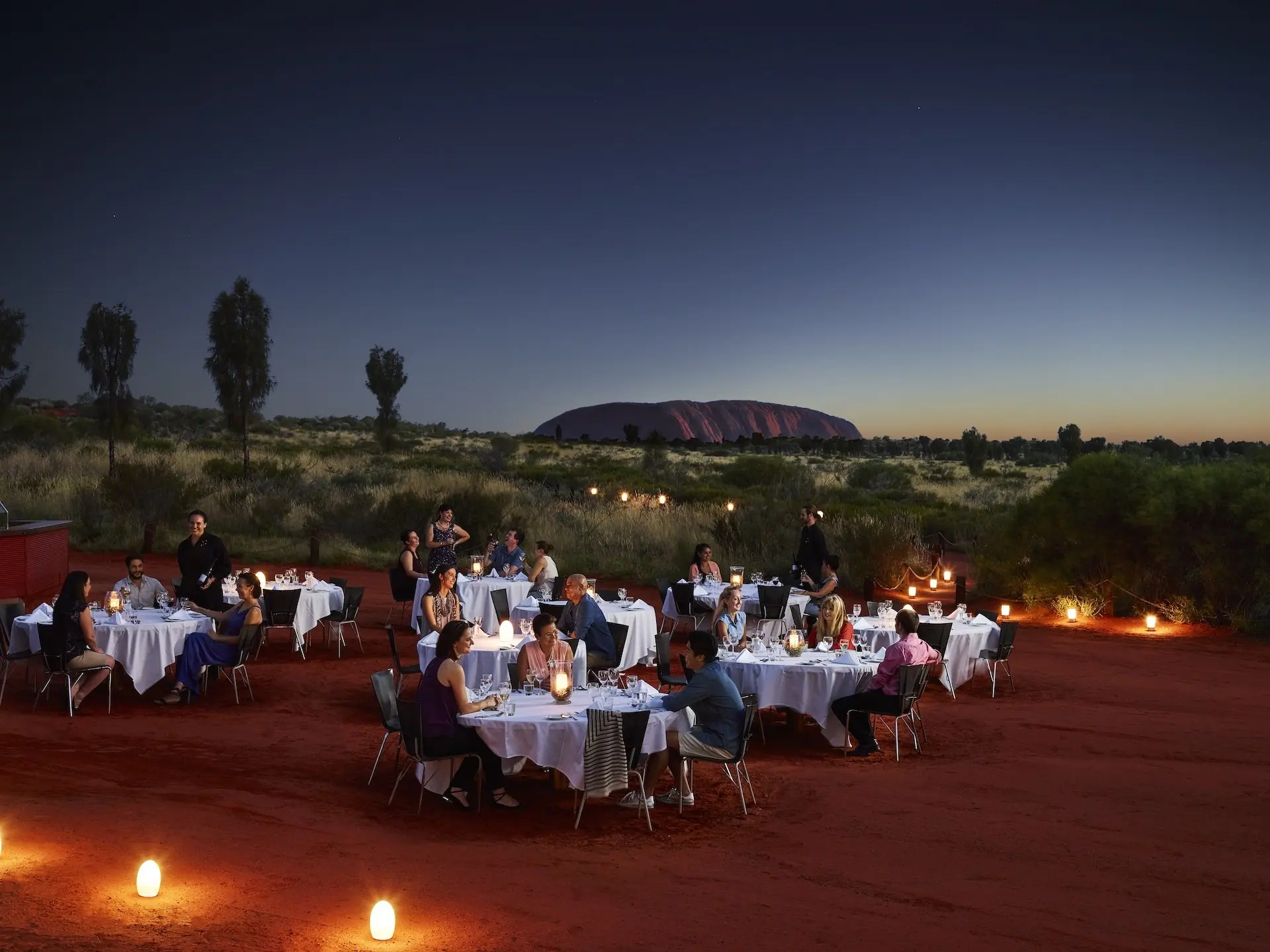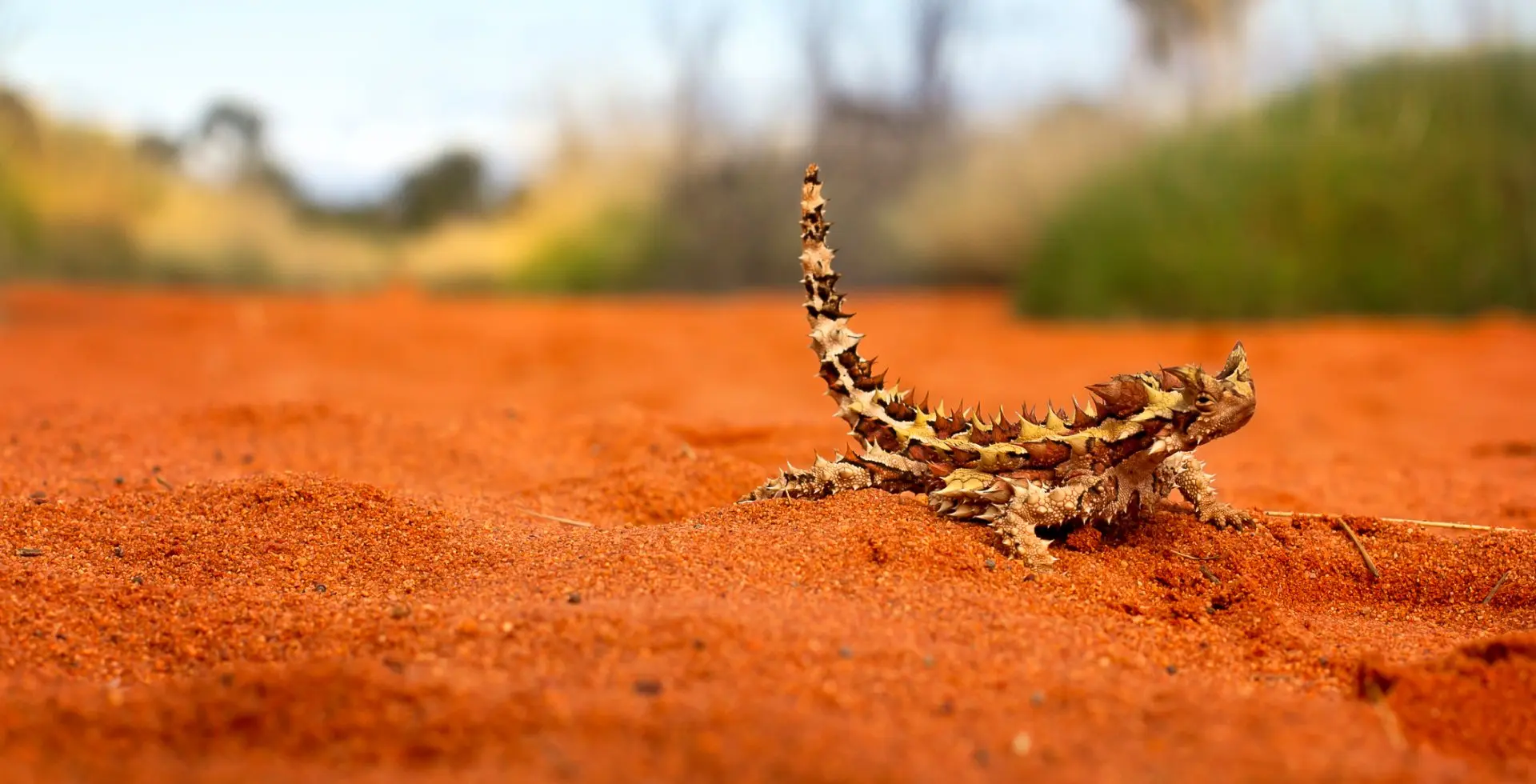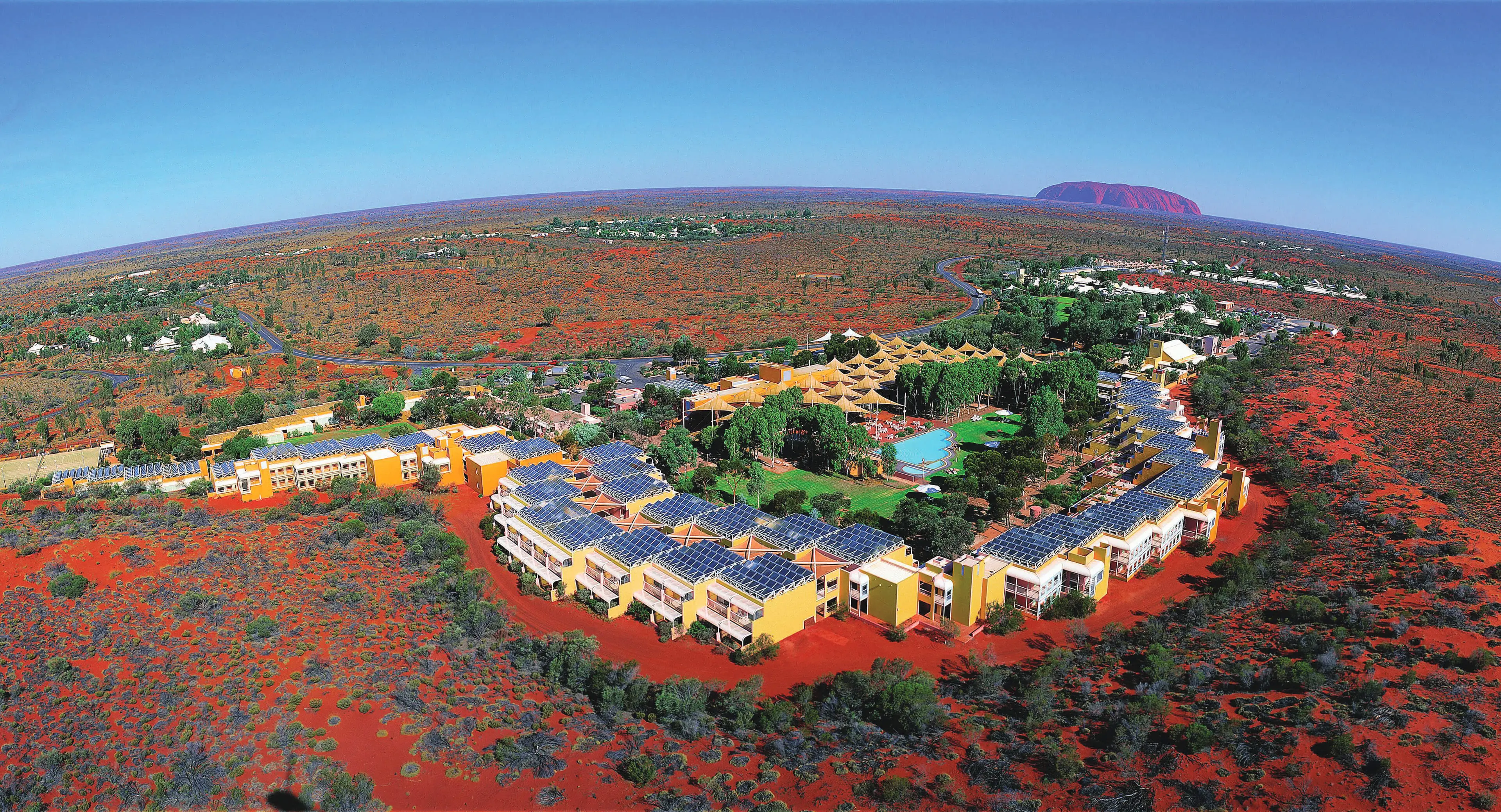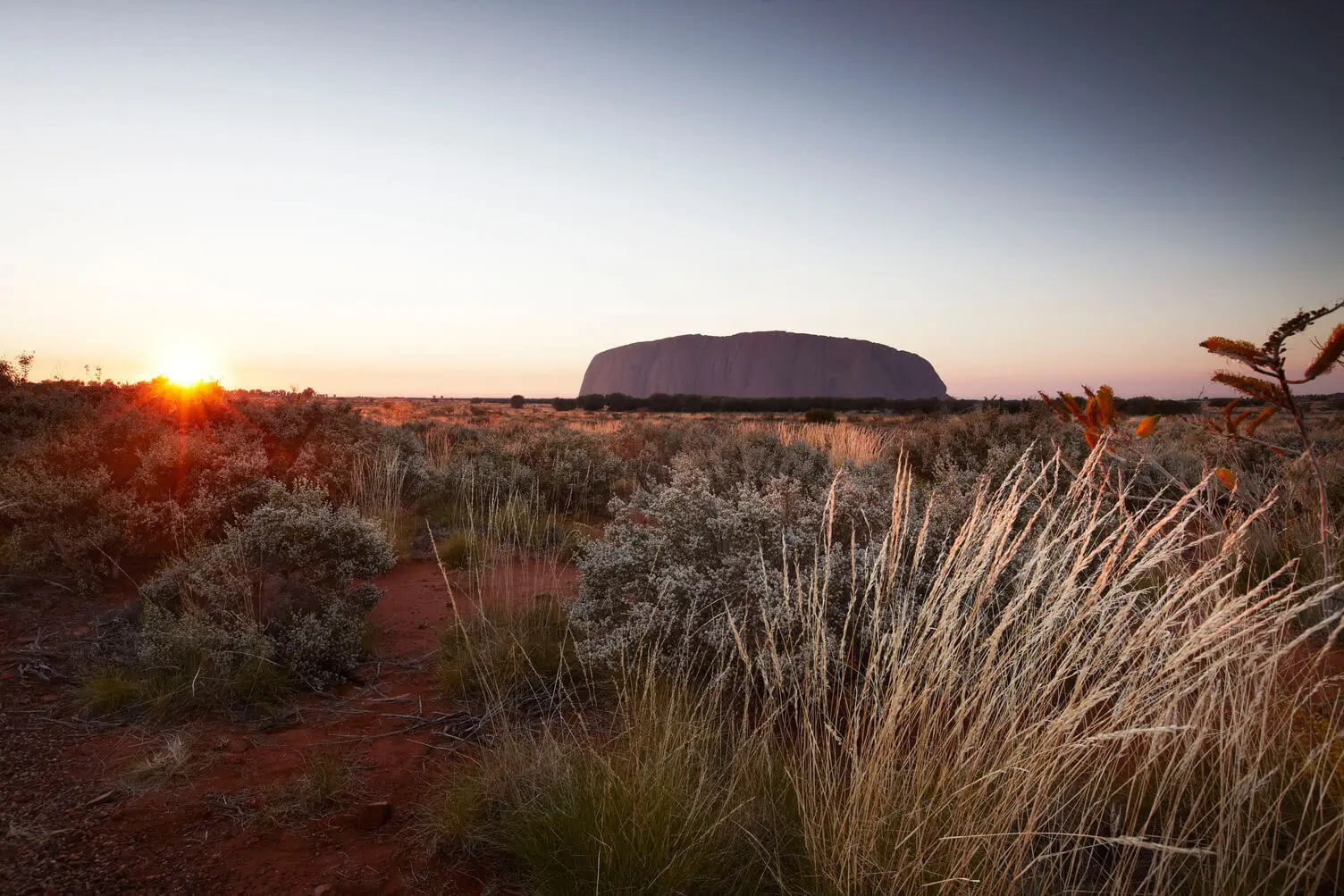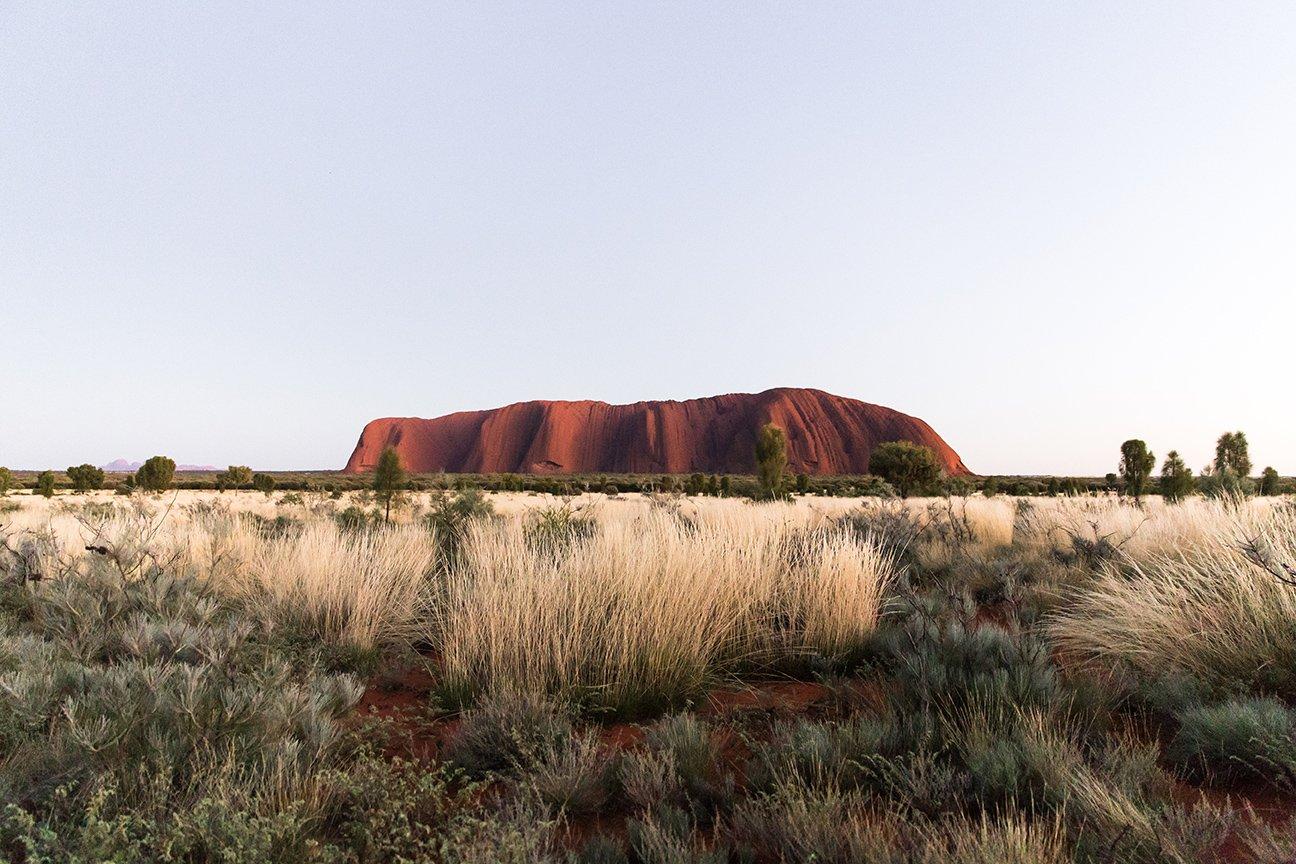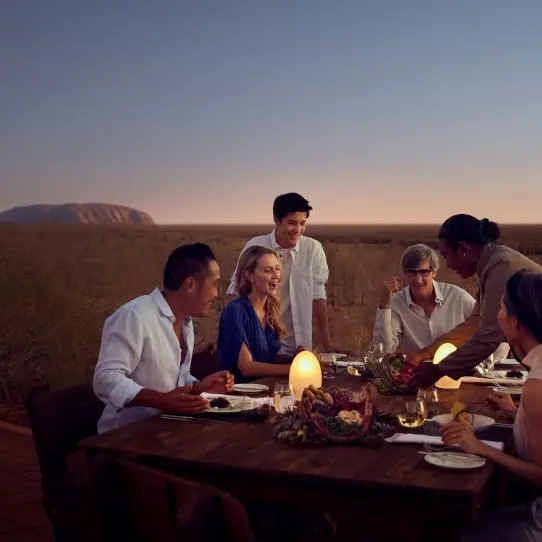Why Every Australian Should Visit Uluru
I first saw Uluru from England after running to catch a bus in the rain. Beneath the heavy lid of a London sky, I turned the pages of my glossy brochure fresh from the travel agent, only to discover this bizarre red rock in the middle of nowhere.
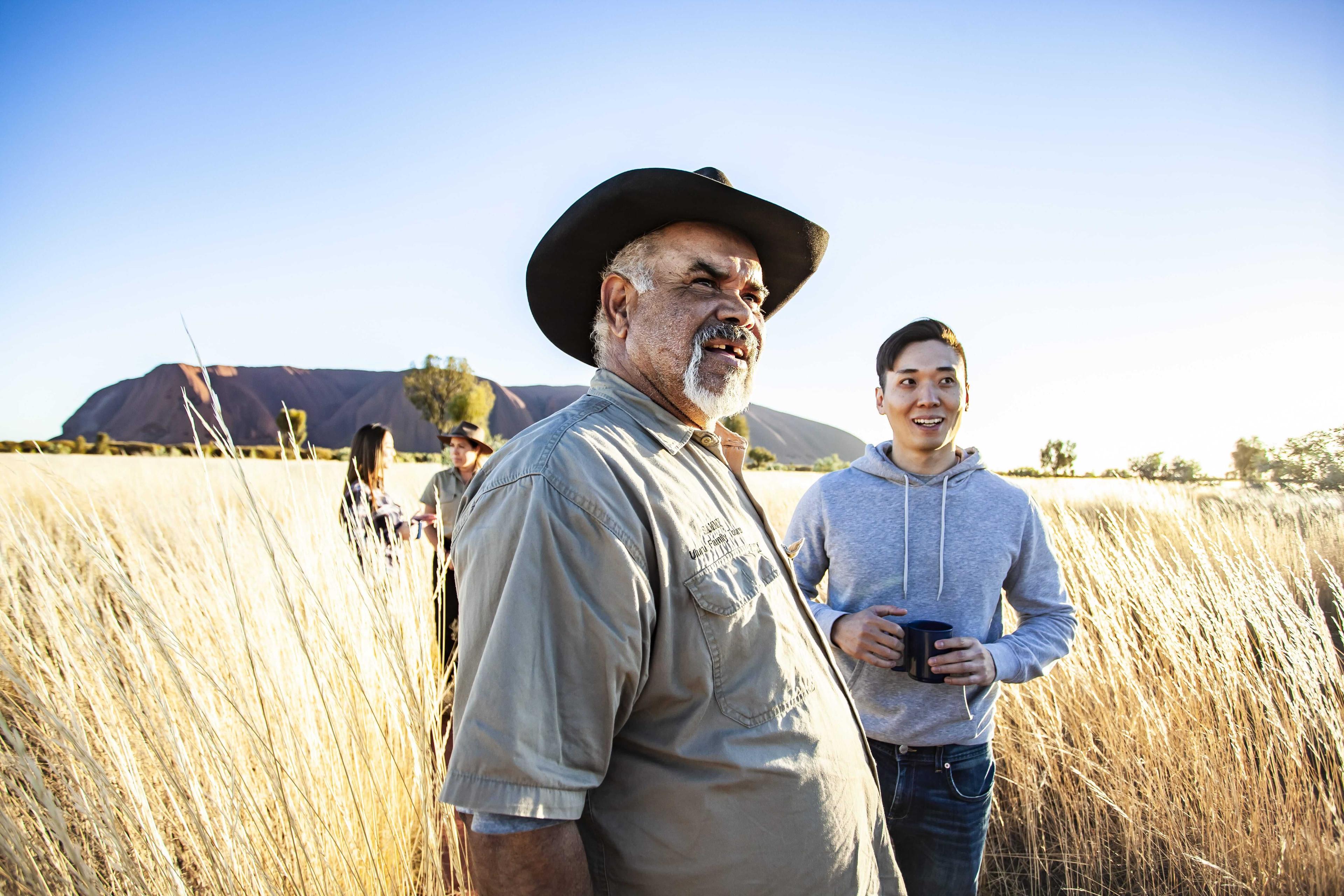
Many Aussies have Uluru on their ‘bucket list’, but sometimes these ‘someday’ adventures get delayed by the temptation to visit far-off destinations overseas. Even though the red desert is incredibly remote, it’s easy to have the mindset that you’ll experience it ‘someday’ because it’s right here in Australia. But why wait? There is so much to discover at Uluru, and it’s in reach for every budget and travel style at Ayers Rock Resort. Read on to learn why every Australian should visit Uluru.
To Learn More About the Aboriginal Culture of Australia
With a population of around 2,500, the Anangu are the traditional custodians of Uluru-Kata Tjuta National Park and the central desert region. For over 50,000 years, the Anangu have practised their culture here in their homelands — an approximate geographical area of 103,000km2 throughout the Northern Territory, South Australia and Western Australia. Aboriginal language, culture, and traditions are strong here, and the Anangu welcome the opportunity to share them with visitors to Uluru and across the region.
The cultural landscapes of Uluru-Kata Tjuta National Park resonate with meaning. They contain creation stories and the associated knowledge of law, relationships, plants, and animals, all of which live in the shapes and features of the land.
Learning about, respecting, and making space in our hearts for our fellow citizens makes us better citizens in turn. You’re invited to make a connection with this land, and we highly encourage you to make time during your visit to learn about the Anangu’s life, culture, art, and traditions.
To spark your curiosity, know that Anangu life revolves around the Tjukurpa. To the Aboriginal people, this is the ancestral period when the world was being formed. Tjukurpa is the basis of all Anangu knowledge and connects everything in life. These stories and many others have been passed down over thousands of years from generation to generation. The elder people recount, maintain, and pass on this knowledge through stories, behaviour, rituals, ceremonies, songs, dances, and art.
Please note that places where significant events in the Anangu story occurred are held as sacred. As such, tourists are not permitted access to certain sites. Even inadvertent access to these grounds can be considered sacrilegious.
At Uluru-Kata Tjuta National Park some areas are fenced off, and photography is restricted in others. This is to ensure that visitors do not inadvertently break Tjukurpa restrictions. Please respect the wishes of the Anangu and do not attempt to circumvent these regulations.
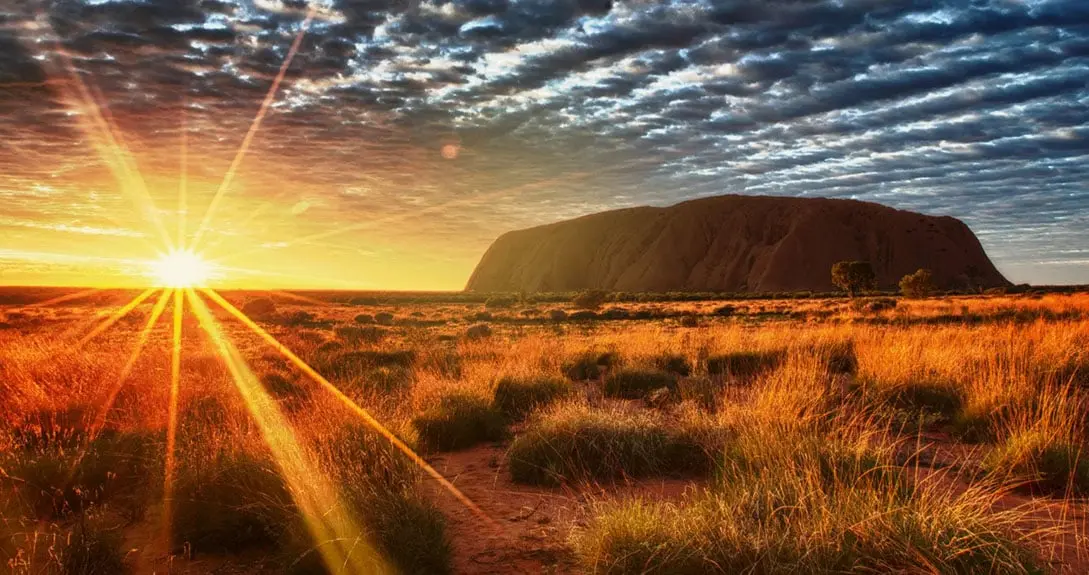

To Make Memories that Last a Lifetime
Surrounded by endless plains, rolling dunes, and an air of tranquillity, nothing can prepare you for the awe-inspiring views and the feeling you get when you see Uluru, the world’s largest monolith, for the first time. Moments as simple as experiencing sunrise and sunset in this vast desert landscape will feel entirely different in this other-worldly slice of the outback. We promise the earthy red glow of Uluru as it basks in the glory of the rising sun will take your breath away. This is more than worth the early wake-up call. Best experienced during a small, guided sunrise tour, you’ll find a renewed sense of calm as you take in the magic of the mesmerizing, vibrant red vistas all around you.
For many, Uluru may be considered the main event — and we can’t say we blame you. But there is so much more to see, enjoy, and experience during your visit to Uluru - Kata Tjuta National Park. With over 101 tours, activities, and attractions in and around Ayers Rock Resort, your days will be action-packed. How will you enhance your visit? A few of our ‘must-do’ experiences include:
- The Field of Light - As darkness falls and Uluru is thrown into silhouette, the Field of Light illuminates. This critically acclaimed work of art, that sends gentle rhythms of coloured light pulsing through the desert, was created by the internationally celebrated artist Bruce Munro. Originally planned as a temporary installation, the Field of Light has been extended indefinitely due to popular demand. The exhibition, aptly named Tili Wiru Tjuta Nyakutjaku (‘looking at lots of beautiful lights’ in local Pitjantjatjara) is Munro’s most extensive work to date. Spanning more than seven football fields in size, it invites immersion in its fantasy garden of 50,000 spindles of light, the stems breathing and swaying through a sympathetic desert spectrum of ochre, deep violet, blue, and gentle white.
- Uluru Camel Tours - A great way to explore the Central Australian desert is from the back of a camel. Camels, ideally suited to the hot, dry climate of Australia’s interior, were imported in the 19th century and remained the principal means of outback transport until railways and roads were established. Today there are an estimated 200,000 one-humped, dromedary-type camels in the wild. Only a few are still used by humans, mostly for touring the desert. Ride high above the desert and explore this region just as the early pioneers did — on a camel. Join Uluru Camel Tours on an unforgettable journey through red dune country with Uluru and Kata Tjuta as your stunning backdrop.
- Air Adventures - For many, a visit to Uluru is a once in a lifetime experience, so why not tick off more of your bucket list? Thrillseekers can get their fix with SkyDive Uluru, combining the spectacular views of Uluru, Kata Tjuta, and far beyond with the rush of jumping out of a plane. Of course, if you’d still like to see the stunning sights from above without the adrenaline-charged jump, consider a helicopter tour for fantastic 360° views of Uluru and Kata Tjuta.[CE1]
Looking for more experience inspiration? Read our blog about our Top 10 Can’t Miss Experiences in Uluru.
To Explore Diverse Wildlife and Breathtaking Vistas
As you survey the vast landscape before you, breathe in and pay close attention to the natural beauty of the Red Centre. During the day, Uluru shines in all its glory as ever-changing colours and countless shades of red radiate their own distinct warmth. It almost makes the name ‘Red Centre’ feel like an understatement! Before you begin snapping countless photos, take a brief moment of pause to really take in the biodiversity and uniqueness of the heart of Australia.
From a distance, Uluru is spectacular, but when you get closer on a base walk, you’ll see for yourself that it is full of surprises. Close up it’s a canvas of curved ribs, etched valleys, baked fissures, and vertiginous walls — sometimes bare, sometimes footed by forest. And beneath the foliage lives a whole other ecosystem, where lizards flit and frogs lay dormant until life-giving rains return them to life.
Yes, even though this is the heart of the desert territory, you may be surprised at the biodiversity of this special place. Home to more than 21 native mammals, 178 species of birds, and 73 different types of reptiles, Uluru - Kata Tjuta National Park delivers an impressive lineup of wildlife for a seemingly harsh environment. How many of these fascinating creatures will you spot during your visit?
As the sun sets and night takes hold, prepare for an entirely different and equally life-changing experience. There are few places where the stars shine as brightly as they do in the outback. Far removed from the bright lights of the big cities, the stars blaze fiercely in the desert sky. Look up, way up, and prepare your eyes for the striking starry sky above you. From here, it’s easy to admire the Milky Way, to spot Alpha Centauri and the Southern Cross, and to catch a glimpse of shooting stars.
One of the best (and tastiest) ways to make the most of the exceptional clarity of the atmosphere is to indulge in the Sounds of Silence experience. This gastronomic adventure takes place over four magical hours. As the night sky twinkles to life, you’ll enjoy a buffet that incorporates native bush ingredients while a resident astronomer takes you on a guided journey of the southern night sky — sharing an entertaining mix of science and mythology.
Are you inspired to visit yet? Check out our sample itineraries, and don’t forget to share your photos with us when you’re hear using #ExploreUluru
[CE1]This experience is no longer running and TBA whether they return.
